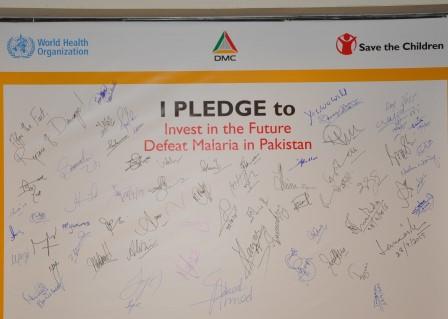 Pakistan shares the highest burden of major vector-borne diseases as malaria, leishmaniasis, dengue, Chikungunya and Crimean-Congo haemorrhagic fever.
Pakistan shares the highest burden of major vector-borne diseases as malaria, leishmaniasis, dengue, Chikungunya and Crimean-Congo haemorrhagic fever.
Like in other parts of the world malaria is a leading cause of morbidity and mortality in Pakistan. It is one of the 6 priority communicable diseases posing threat to the health of millions. With one million estimated and 300 000 confirmed reported cases each year, Pakistan has been grouped with Afghanistan, Somalia, Sudan and Yemen accounting for more than 95% of the total regional malaria burden. Malaria transmission in Pakistan has been traditionally seasonal and of unstable pattern. Intense transmission occurs in districts and agencies located in bordering regions with Islamic Republic of Iran and Afghanistan and along coastal belt in Sindh and Balochistan. Based on the reported “Annual Parasite Incidence” (API) FATA followed by Balochistan and Khyber Pakhtunkhwa are the highest endemic provinces/regions. Districts in Rural Sindh as Thatta, Mirpur Khas, Khairpur, and Tharparkar are the major endemic zones in Sindh province. According to the latest “Stratification” 66 districts and agencies have been categorized in “high endemicity stratum” where API is >5/1000 population. Punjab with API >1/1000 has been the lowest endemic province in the last 2 decades where only few active foci of active transmission have been left.
P.falciparum and P.vivax are the only reported parasite species with later the most predominant one (>80%). A.culicifacies and A.stephensi are known primary vectors involved in the transmission of malaria. Both the vectors are considered to be essentially endophilic in their diurnal resting and mainly zoophilic (feeding on cattle).
Mass population movements within the country and across international borders, unpredictable climatic and weather conditions, refugees and internally displaced people (IDPs), poor socioeconomic conditions, declining health infrastructure, resource constraints, poor access to preventive and curative services, and mounting drug and insecticide resistance in parasites and vectors, all contribute to this huge disease burden.
Malaria control
Efforts for effective malaria control date back to 1950 before the countrywide eradication campaign was launched in 1961, under the auspices of WHO, and with support from UNICEF and USAID. As a result of this campaign the malaria was nearly eradicated from the country and a marked reduction in malaria cases was observed from an estimated 7 million cases in 1961 to 9,500 cases in 1967. An overall reduction from 15% to less than 0.01% was observed in the slide positivity rate. However, the relief proved to be temporary and in 1969 malaria began to increase due to premature withdrawal of efforts. Since 1975 until 2010 the strategies and policies had been aligned with global control concepts. However in recent years planning for malaria elimination programme in Punjab has been in process.
WHO support
WHO has been the only technical partner supporting the national and provincial control programmes since 2002. This support is provided in the areas of strategic planning, policy guidelines development, operational research, diseases surveillance, resource mobilization, advocacy, capacity-building, assessments and situation analyses, introduction of new interventions and technologies for improving quality in diagnosis, treatment and prevention measures.
WHO has been instrumental in the development linkages with the neighbouring countries (Islamic Republic of Iran and Afghanistan) through PIAM-Net (Pakistan, Islamic Republic of Iran, Afghanistan Malaria Network) where neighbours share their experiences and coordinate their efforts on both sides of the borders. WHO is providing technical support to the ministries to broaden the scope of provincial control programmes beyond malaria control to all vector-borne infections control based on the concepts of integrated vector management. WHO has been engaged with national and provincial control programmes in addressing the issues linked with the use of public health pesticides management throughout the life cycle of pest control chemicals including the disposal of “obsolete pesticides and the rational use of pest control methods following the WHOPES guidelines.
Related link
Global Technical Strategy for Malaria 2016–2030
June 2015
Malaria factsheet
 Pakistan shares the highest burden of major vector-borne diseases as malaria, leishmaniasis, dengue, Chikungunya and Crimean-Congo haemorrhagic fever.
Pakistan shares the highest burden of major vector-borne diseases as malaria, leishmaniasis, dengue, Chikungunya and Crimean-Congo haemorrhagic fever.
Like in other parts of the world malaria is a leading cause of morbidity and mortality in Pakistan. It is one of the 6 priority communicable diseases posing threat to the health of millions. With one million estimated and 300 000 confirmed reported cases each year, Pakistan has been grouped with Afghanistan, Somalia, Sudan and Yemen accounting for more than 95% of the total regional malaria burden. Malaria transmission in Pakistan has been traditionally seasonal and of unstable pattern. Intense transmission occurs in districts and agencies located in bordering regions with Islamic Republic of Iran and Afghanistan and along coastal belt in Sindh and Balochistan. Based on the reported “Annual Parasite Incidence” (API) FATA followed by Balochistan and Khyber Pakhtunkhwa are the highest endemic provinces/regions. Districts in Rural Sindh as Thatta, Mirpur Khas, Khairpur, and Tharparkar are the major endemic zones in Sindh province. According to the latest “Stratification” 66 districts and agencies have been categorized in “high endemicity stratum” where API is >5/1000 population. Punjab with API >1/1000 has been the lowest endemic province in the last 2 decades where only few active foci of active transmission have been left.
P.falciparum and P.vivax are the only reported parasite species with later the most predominant one (>80%). A.culicifacies and A.stephensi are known primary vectors involved in the transmission of malaria. Both the vectors are considered to be essentially endophilic in their diurnal resting and mainly zoophilic (feeding on cattle).
Mass population movements within the country and across international borders, unpredictable climatic and weather conditions, refugees and internally displaced people (IDPs), poor socioeconomic conditions, declining health infrastructure, resource constraints, poor access to preventive and curative services, and mounting drug and insecticide resistance in parasites and vectors, all contribute to this huge disease burden.
Malaria control
Efforts for effective malaria control date back to 1950 before the countrywide eradication campaign was launched in 1961, under the auspices of WHO, and with support from UNICEF and USAID. As a result of this campaign the malaria was nearly eradicated from the country and a marked reduction in malaria cases was observed from an estimated 7 million cases in 1961 to 9,500 cases in 1967. An overall reduction from 15% to less than 0.01% was observed in the slide positivity rate. However, the relief proved to be temporary and in 1969 malaria began to increase due to premature withdrawal of efforts. Since 1975 until 2010 the strategies and policies had been aligned with global control concepts. However in recent years planning for malaria elimination programme in Punjab has been in process.
WHO support
WHO has been the only technical partner supporting the national and provincial control programmes since 2002. This support is provided in the areas of strategic planning, policy guidelines development, operational research, diseases surveillance, resource mobilization, advocacy, capacity-building, assessments and situation analyses, introduction of new interventions and technologies for improving quality in diagnosis, treatment and prevention measures.
WHO has been instrumental in the development linkages with the neighbouring countries (Islamic Republic of Iran and Afghanistan) through PIAM-Net (Pakistan, Islamic Republic of Iran, Afghanistan Malaria Network) where neighbours share their experiences and coordinate their efforts on both sides of the borders. WHO is providing technical support to the ministries to broaden the scope of provincial control programmes beyond malaria control to all vector-borne infections control based on the concepts of integrated vector management. WHO has been engaged with national and provincial control programmes in addressing the issues linked with the use of public health pesticides management throughout the life cycle of pest control chemicals including the disposal of “obsolete pesticides and the rational use of pest control methods following the WHOPES guidelines.
Related link
Global Technical Strategy for Malaria 2016–2030
June 2015
Malaria factsheet
 Pakistan shares the highest burden of major vector-borne diseases as malaria, leishmaniasis, dengue, Chikungunya and Crimean-Congo haemorrhagic fever.
Pakistan shares the highest burden of major vector-borne diseases as malaria, leishmaniasis, dengue, Chikungunya and Crimean-Congo haemorrhagic fever. 








